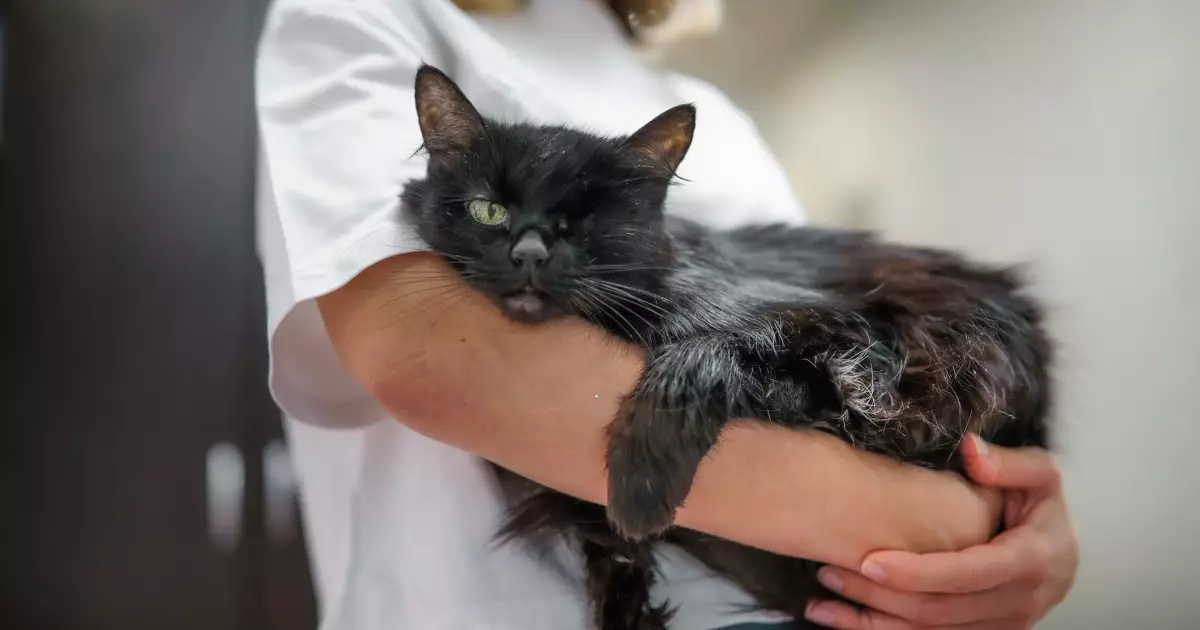Cats have long held a revered place in human households, captivating us with their grace, independence, and charm. Among these magnificent beings are one-eyed cats, whose distinctive condition adds an extra layer of intrigue to their already fascinating nature. While it might seem that losing an eye could hinder a cat’s day-to-day life, these remarkable creatures often demonstrate an incredible ability to adapt and thrive with appropriate care and understanding. In this article, we will explore the various reasons why some cats have only one eye, discuss how to properly accommodate their unique needs, and provide essential safety tips to ensure their well-being.
Causes for Losing an Eye
The journey of a one-eyed cat can vary widely, with several factors leading to their condition. One prevalent reason is traumatic injury. As naturally curious animals, cats often engage in activities that put them at risk of accidents, whether it’s a playful rough-and-tumble with another animal or an encounter with sharp objects. Such injuries can result in the loss of an eye.
Infections or diseases are also prominent culprits. Conditions like feline herpesvirus can lead to severe eye problems that, when neglected, may necessitate the removal of an affected eye to protect the overall health of the animal. Additionally, congenital defects may be at play; some cats might be born with eye-related anomalies which can affect one or both eyes.
One-Eyed Cats vs. Blind Cats: Understanding the Differences
While both one-eyed cats and blind cats share visual impairments, the extent and nature of their challenges differ significantly. One-eyed cats retain some degree of vision in their remaining eye, enabling them to navigate their surroundings more easily than their blind counterparts. This retained vision allows them to perceive their environments, judge distances, and react to movements, which might not be accessible to blind cats who must rely on touch and sound.
Despite this advantage, one-eyed cats do face challenges, particularly regarding depth perception and spatial awareness. Understanding these differences is crucial, as it informs how we care for these special felines, ensuring they lead happy and enriching lives.
A safe and secure environment is vital for the well-being of one-eyed cats. Here are effective strategies to tailor your home to accommodate their unique needs:
1. **Limit High Perches**: It is essential to adjust the layout of your home to prevent access to high surfaces. One-eyed cats are less confident in jumping onto tall furniture due to impaired depth perception. Reducing their access to such heights or providing easier access through kitty stairs can greatly enhance their confidence.
2. **Install Ramps**: If your home features stairs, consider adding ramps. This will help alleviate the risk of falls and allow them to navigate their environment comfortably.
3. **Maintain a Consistent Environment**: Cats are creatures of habit, and frequent changes in the arrangement of furniture can be disorienting. Keeping their environment familiar enables them to move around with confidence.
4. **Outdoor Supervision**: If your one-eyed cat enjoys outdoor excursions, always ensure supervised adventures. This will protect them from unforeseen hazards they may not perceive as quickly as other cats.
5. **Hygiene is Crucial**: Keeping the litter box impeccably clean is not just a matter of tidiness; it helps prevent potential irritants that could affect your cat’s health. Regularly check their hygiene, especially regarding eye health.
6. **Safe Playtime**: Choose playthings wisely, favoring soft, rounded toys that minimize the risk of injury. Avoid sharp objects or toys that could harm their remaining eye.
7. **Frequent Veterinary Visits**: Regular check-ups are vital for monitoring the overall health of one-eyed cats. Prompt attention to any health concerns can prevent larger issues down the line.
Caring for a one-eyed cat requires more than just practical changes; it demands a wealth of love and compassion. By understanding their specific challenges and adapting our homes accordingly, we can provide these resilient felines with an enriching, secure life. One-eyed cats showcase unparalleled strength and adaptability, offering endless affection and companionship in return for our support. Thus, let us celebrate these unique creatures and embrace the chance to nurture their extraordinary resilience.
